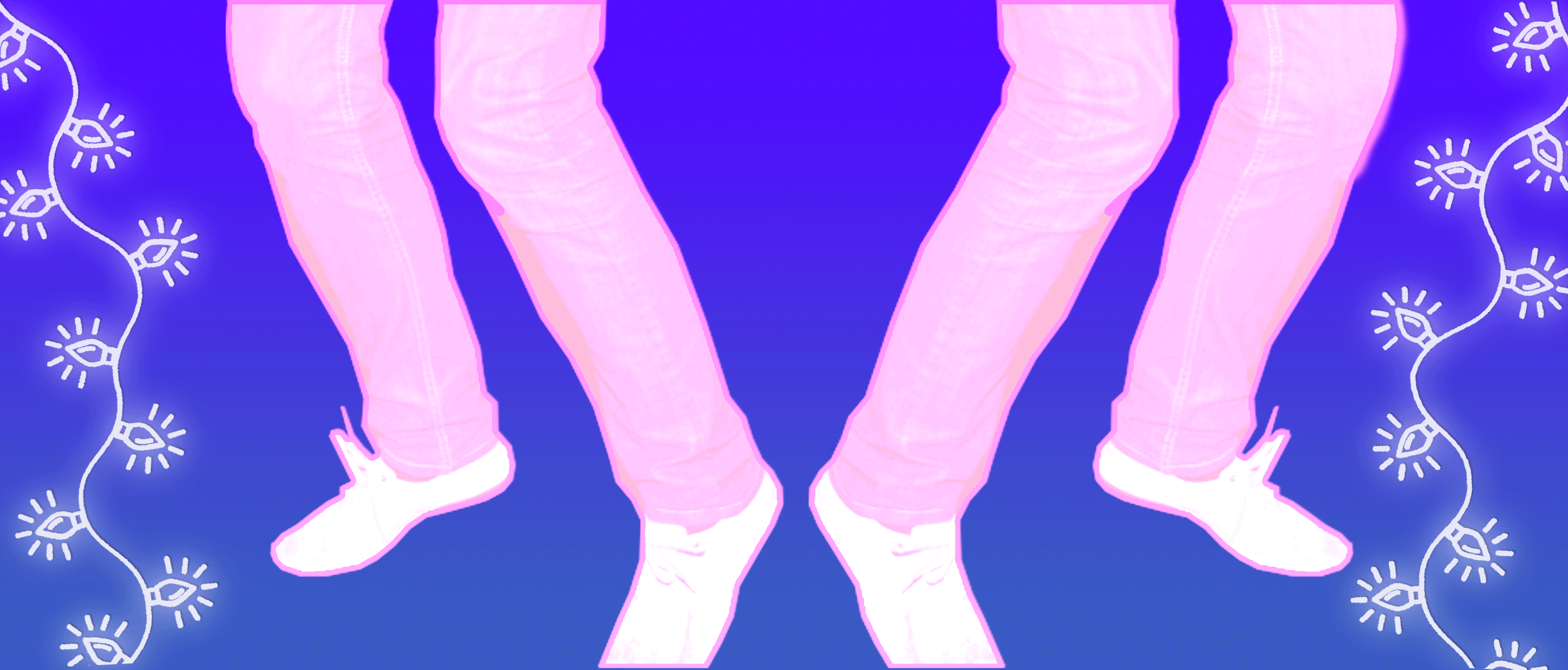It usually starts this way: in an unfinished basement, low-slung string lights grazing the frizz on your hair, surrounded by the hesitant yet eager pulse of other teenage bodies at the dance party. Some young boy will get excited about a beat (Death Grips) and overdo it, stomping the concrete ground to a pulp and shaking an old family’s shotgun house.
I wanted to join, restless to fit in, but wasn’t sure I was cool or confident enough to move my body in that way. I was more worried about being crushed.
Standing shy in a corner with a best friend, this is how I learned to dance. One uncertain foot at a time, I moved my body to some electric rhythm, stepping in tune with careful consideration.
I spent a slow year dancing around basements, in concrete corners, jumping to my own beat and hoping to God I had a friend to go along with. Eventually I realized it was more weird if I didn’t dance at all than if I just made a fool of myself. I began to grow more silly — throw an arm over my head, a leg in the air, an in-and-out head bump with a friend. I was finally fitting in, and it was okay to be weird. But 17-year-old Megan didn’t know what dancing could do for her until she saw 3-year-old Harper Mars dance and jump on her brother’s bed — “Shake it off, shake it off!”
I had stumbled my way into a babysitting gig my senior year of high school. Harper Mars and her brother Samson were my charges every Saturday for a grueling nine hours straight. Harper had a developmental disorder and could be particularly hard to look after, especially when the elder Samson was learning, leaving Harper behind. She was nearly nonverbal, had difficulty walking straight, and couldn’t put her shoes on — at least a year or more behind the others her age. But Harper Mars could dance like no other.
Bouncing on the bed, her bobbed blonde haircut swinging up and down, she never looked more in control of her movements than when the toy radio shouted Taylor Swift. She could move like this for hours without getting tired, the grin stretching across her face, not understanding a single word of the song but not needing anything more than the the agency over her body the dance provided, a confidence she couldn’t yet feel in words.
At future basement dance parties, sometimes the night after a day of dancing with Harper, I began to connect the two. If Harper wasn’t embarrassed to dance, I certainly didn’t need to be. We’d take a break every 45 minutes or so to cool down. We were just there to have fun, but our bodies were working hard, and craved the cool night air of the backyard porch after “Dance Yrself Clean.”
When my body is still working hard, there’s no better break from physical and mental strain than coming home on a weeknight, blasting “I Wanna Dance With Somebody” with my roommates, and totally letting go of anything else I was thinking about. For the four minutes and three seconds it takes to listen to “Green Light” by Lorde, I can feel better returning to my normal life afterward.
Since then, dance parties have grown from something I feared into something I wanted to host myself. Nothing has brought such autonomy over my own body like dancing surrounded by trusted friends and good music. I can move and jump and kick however I want just because it feels good — this is how we build confidence in ourselves. We should all be dancing, and teaching our kids how to dance.
And if you need a nudge to do so yourself, I’m certainly not judging you. I’d rather just dance with you.
Header by Cody Corrall. Photos by Amy Elyse and Alex Auda Samora




NO COMMENT